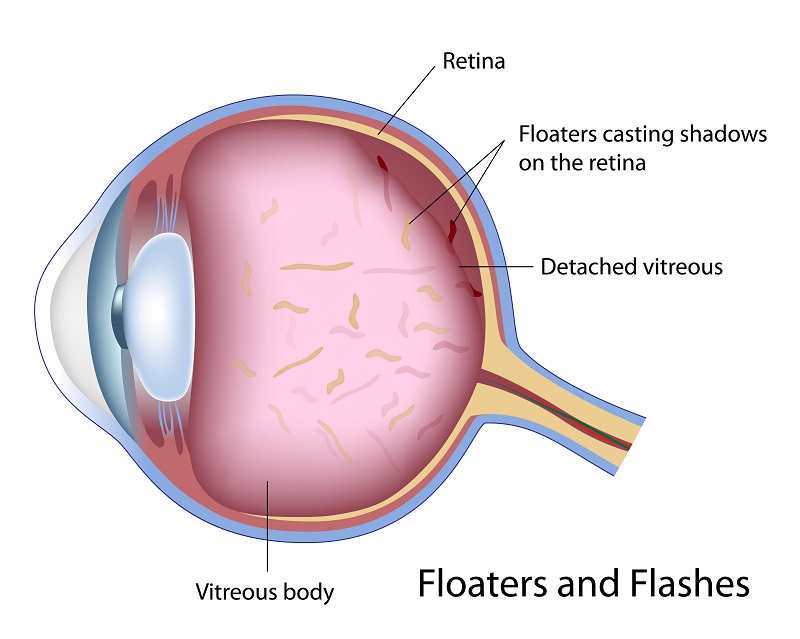When Should You See Your Ophthalmologist?

It’s not easy to know when a problem with your vision should be considered an emergency and when it is something you can deal with on your own. Floaters and flashers are a common problem that effects our field of vision. Sometimes they are a minor issue while other times they can indicate a severe problem that needs prompt medical attention.
What Are Floaters?
The term floater is used to describe a speck or thread that may drift across your vision. This happens as a result of a tiny cell cluster or protein that is lodged within the vitreous humor. This area serves as a pathway that allows light to enter the eye. When a floater appears, you actually see its shadow.
What Are Flashers?
Flashers are strands of light or small sparks that seem to flicker within your field of vision. This happens when vitreous gel in your eye rubs, tugs on, or bumps the retina. Much like a floater, it’s painless and isn’t usually a big concern.
Identifying an Ocular Emergency
If floaters and flashers are generally harmless, then when should you be concerned? There are situations where a floater or flasher can be a sign of retinal disease. Shrinking vitreous can cause tugging on the retina as it pulls away during a posterior vitreous detachment. This condition can cause permanent vision loss, so it must be addressed quickly. If you notice any of the following symptoms, you may be experiencing an ocular emergency:
- New onset of flashers and floaters
- Shading in your field of vision that’s gradual and appears from one side
- A sudden, severe decline in your central vision
If you have any concerns about floaters and flashers, contact Eye Michigan right away.
